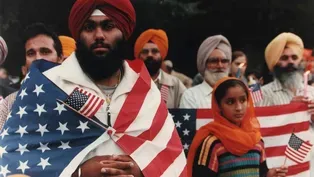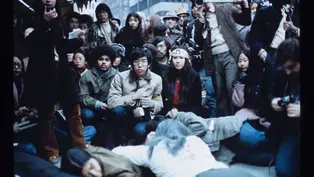
Chinatown Rises Up to Unite Against Police Brutality
Clip: 5/13/2024 | 1m 38sVideo has Closed Captions
Lee’s iconic photo put a protest against police brutality on the front page of the Post.
Lee’s photo of a bloody demonstrator made a Chinatown protest against police brutality front-page news in 1975. He recalls his determination to both document this unprecedented community gathering, and to demand that every news outlet pay attention. Activist Fay Chiang recalls this moment as being “the first time we showed city government the community could organize into a political force."

Chinatown Rises Up to Unite Against Police Brutality
Clip: 5/13/2024 | 1m 38sVideo has Closed Captions
Lee’s photo of a bloody demonstrator made a Chinatown protest against police brutality front-page news in 1975. He recalls his determination to both document this unprecedented community gathering, and to demand that every news outlet pay attention. Activist Fay Chiang recalls this moment as being “the first time we showed city government the community could organize into a political force."
How to Watch Photographic Justice: The Corky Lee Story
Photographic Justice: The Corky Lee Story is available to stream on pbs.org and the free PBS App, available on iPhone, Apple TV, Android TV, Android smartphones, Amazon Fire TV, Amazon Fire Tablet, Roku, Samsung Smart TV, and Vizio.
Providing Support for PBS.org
Learn Moreabout PBS online sponsorship(crowd shouts) - 1975, all the businesses closed in Chinatown at the height of this civil rights protest against police brutality.
(crowd shouts) The policemen wanted to move a certain section and people weren't willing to move.
So, the police start to push and then eventually one of them swung a billy club and hit this individual.
I had actually been pretty close, probably within six feet, and there was no cause to, you know, hit the guy.
Immediately, I called up "The New York Times," and they said they had their photographer there, but they didn't know of any outbreak of violence.
I called the "Daily News."
They didn't wanna see the photograph.
And then the "New York Post" said they had their photographer there.
I said, "Well, my photographs show that somebody got beaten up and the police are taking him away," and then I, there was a little bit of a silence on the other end of the phone and then they came back to me and said, "Okay, kid, bring it in."
(contemplative music) And I made the front page.
(contemplative music) - That photograph in the "New York Post," that was a breakthrough for Corky, and I think for us, in terms of representing the issues.
I think it was the first time we showed city government that the community could organize into a political force.
(contemplative music fades)
Corky Lee’s Life, Legacy, and Quest for Photographic Justice
Video has Closed Captions
The importance of the life, art, and activism of Chinese American photographer Corky Lee. (3m 2s)
Documenting the Asian American Movement
Video has Closed Captions
Corky Lee’s rare images of the Asian American Movement on the East Coast in the 1970s. (1m 2s)
Providing Support for PBS.org
Learn Moreabout PBS online sponsorship












